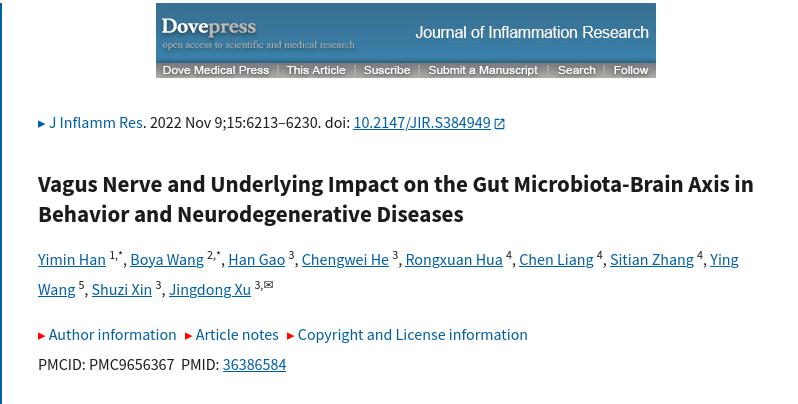Hello, friends!
Today, we will review an article from the Journal of Inflammation Research, prepared by medical researchers from Beijing, China. The study focuses on the vagus nerve and its influence on the gut-microbiota-brain axis in behavior and neurodegenerative diseases.
The Gut-Microbiota-Brain Axis
The gut-microbiota-brain axis is considered a bridge and connection between gut microbiota and the brain. This connection is achieved through:
- Neuroanatomical pathways, such as the vagus nerve and the spinal cord
- The neuroendocrine system, including the hypothalamic-pituitary-adrenal (HPA) axis
- Cytokines, metabolic pathways, and neurotransmitters
The gut is a complex microecosystem that contains various microorganisms, including bacteria, parasites, fungi, and viruses. Research shows that gut microbiota plays a crucial role in digestion and nutrient absorption.
Moreover, gut microbiota is not only involved in digestion but also protects the body by forming a membrane barrier. It provides pathogen-associated molecular patterns and metabolites that enhance immune system development.
Gut microbiota influences not only gastrointestinal disorders but also neuropsychiatric conditions, including:
- Depression
- Autism spectrum disorders (ASD)
- Neurodegenerative diseases such as Parkinson’s disease, Alzheimer’s disease, and amyotrophic lateral sclerosis (ALS)
The complexity of the gut-microbiota-brain axis highlights the importance of hormones and neurotransmitters in immune system regulation.
Some microorganisms are involved in GABA neurotransmitter production, which plays a key role in calming the nervous system:
- Bifidobacterium
- Bacteroides
- Parabacteroides
The Role of the Vagus Nerve in the Gut-Microbiota-Brain Axis
The vagus nerve is a parasympathetic nerve that contains afferent fibers responsible for transmitting signals from the body to the brain.
- 80% of afferent fibers are responsible for transmitting taste, visceral, and somatic sensations:
Taste sensations – perception of flavors
Visceral sensations – signals from internal organs (e.g., pain, fullness, bloating, nausea)
Somatic sensations – physical sensations on the body’s surface or in the musculoskeletal system (e.g., touch, pain, temperature, vibration)
2. 20% of fibers regulate the gastrointestinal tract, heart, and lungs, acting as a bridge between the central nervous system and other body systems.
The study presents numerous recent research findings on the gut-brain system and its impact on behavior.
For example, certain bacterial strains were shown to influence behavioral patterns:
Lactobacillus rhamnosus reduced anxiety-like behavior
Bifidobacterium longum showed a similar calming effect
Lactobacillus reuteri was found to modify social behavior
Although many mechanisms are still being studied, and precise connections between diseases remain unclear, this research gives hope for future discoveries. More comprehensive clinical recommendations could potentially transform the lives of people with neurological and psychiatric conditions.
Honestly, I was impressed by the depth of useful information in this study! It makes me want to immediately add more prebiotics and probiotics to my diet.
What do you think? Do you believe microbiota has such a strong impact on the brain and behavior?
Read the full text of the article.
